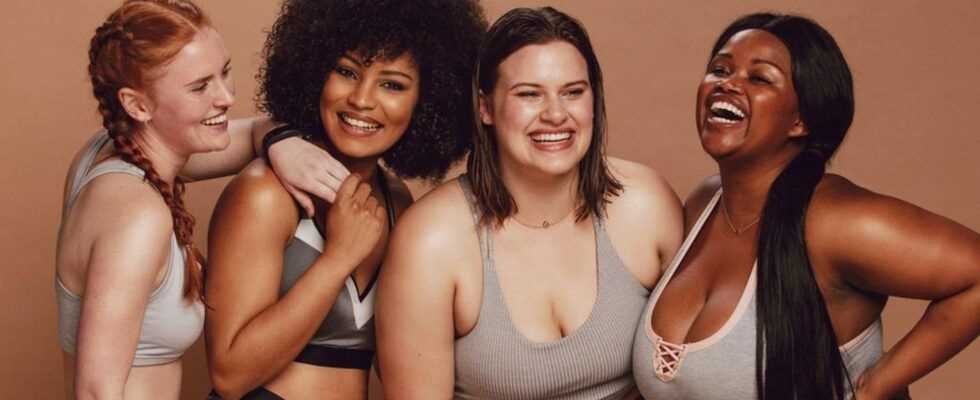The "Body Positivity" movement has been fighting for more acceptance of different bodies for years. An overview of the status quo.
The keyword "body positivity" has been a central topic in society for some time. Movement stands for acceptance by all people – regardless of physical ability, size, gender, ethnicity or appearance. In the social media in particular, "Body Positivist Activists" fight against the common ideals of beauty – on Instagram alone you can find around 5.5 million posts under the hashtag #bodypositivity.
"Body positivity" existed as early as the Victorian era
As early as the late 1960s there were initiatives such as "Health At Every Size" (in German: "Health in every size") and a larger campaign against seeing thicker bodies as unhealthy. However, the movement actually started much earlier. "Body Positivity" has its origins in the first wave of feminism in the second half of the 19th century. A movement called the Victorian Dress Reform Movement aimed to put an end to the use of corsets on the tiny waists of the day.
Ever since the birth of social media, the topic has been on everyone's lips again. Women show themselves on Facebook, Youtube, Instagram and Co. with bacon rolls, hairy legs or cellulite. Activists oppose unrealistic standards of female beauty, such as smooth skin and thin bodies, and inspire women with mottos such as "Love your body" or "Every woman is beautiful" to love their bodies for what they are.
This is how companies support the movement
For some time now, "body positivity" has also been an increasingly popular topic in advertising and marketing. Much more often than a few years ago, commercials show women with different body types and skin colors, but also, for example, pigment disorders that were only recently considered to be flaws. In 2016 Mattel released a new line of various Barbies in different clothing sizes and skin types. Until then, the doll had represented an unrealistic body standard for young women for decades.
The ladies' razor manufacturer Gillette Venus is currently doing its best with its "My Skin. My Way." strong for the subject. Together with DKMS LIFE, the company supports the "look good feel better" cosmetic seminars for cancer patients. Through donations, among others For every razor sold, as many people affected as possible should be able to participate in the online seminars. The program aims to help women cope better with the external changes caused by their cancer and to feel good in their bodies – all in the spirit of self-love and "body positivity".
DKMS LIFE is supported by its partners as well as prominent role models such as Angelina Kirsch (32), Palina Rojinski (35) and Stefanie Giesinger (24) – also because they themselves are or were often affected by excessive demands on their bodies.
There has also been a change in the world of fashion: In recent years, more and more curvy models have walked the catwalks of large companies, popular fashion brands made large sizes more accessible and models like Ashley Graham (32) and Tess Holliday (35) graced the magazine cover of "Sports Illustrated "," Vogue "and" Elle ". The singer Lizzo (32) is currently a true "body positivity" icon and self-love figurehead for young girls. In the film industry, too, overweight protagonists are more present than ever and are less subject to stereotypes.
"Body Neutrality" instead of "Body Positivity"?
However, reactions like the one to singer Adeles (32) weight loss show that the acceptance of all bodies has not yet fully arrived in society. Her character has been in focus since the beginning of her career: First she was praised for her courage to show herself as a curvy woman in the music industry, now there is recognition for the fact that the singer has the supposed transformation from "ugly duckling" to "beautiful swan" has achieved. In all discussion about Adele's body, her musical performance takes a back seat.
The social psychologist Anuschka Rees also describes this problem in "Die Zeit": "Body Positivity" is a step in the right direction, but does not go to the root of the problem. Rees advocates "Body Neutrality" instead of "Body Positivity". The goal is not to love your own body or to find every pimple beautiful, but rather to couple your own self-esteem less to the external appearance.
That should also be a message that most pioneers, but also fans of the "Body Positivity" movement should approve: What is important is not how you look, but what you do and what values you stand up for.
